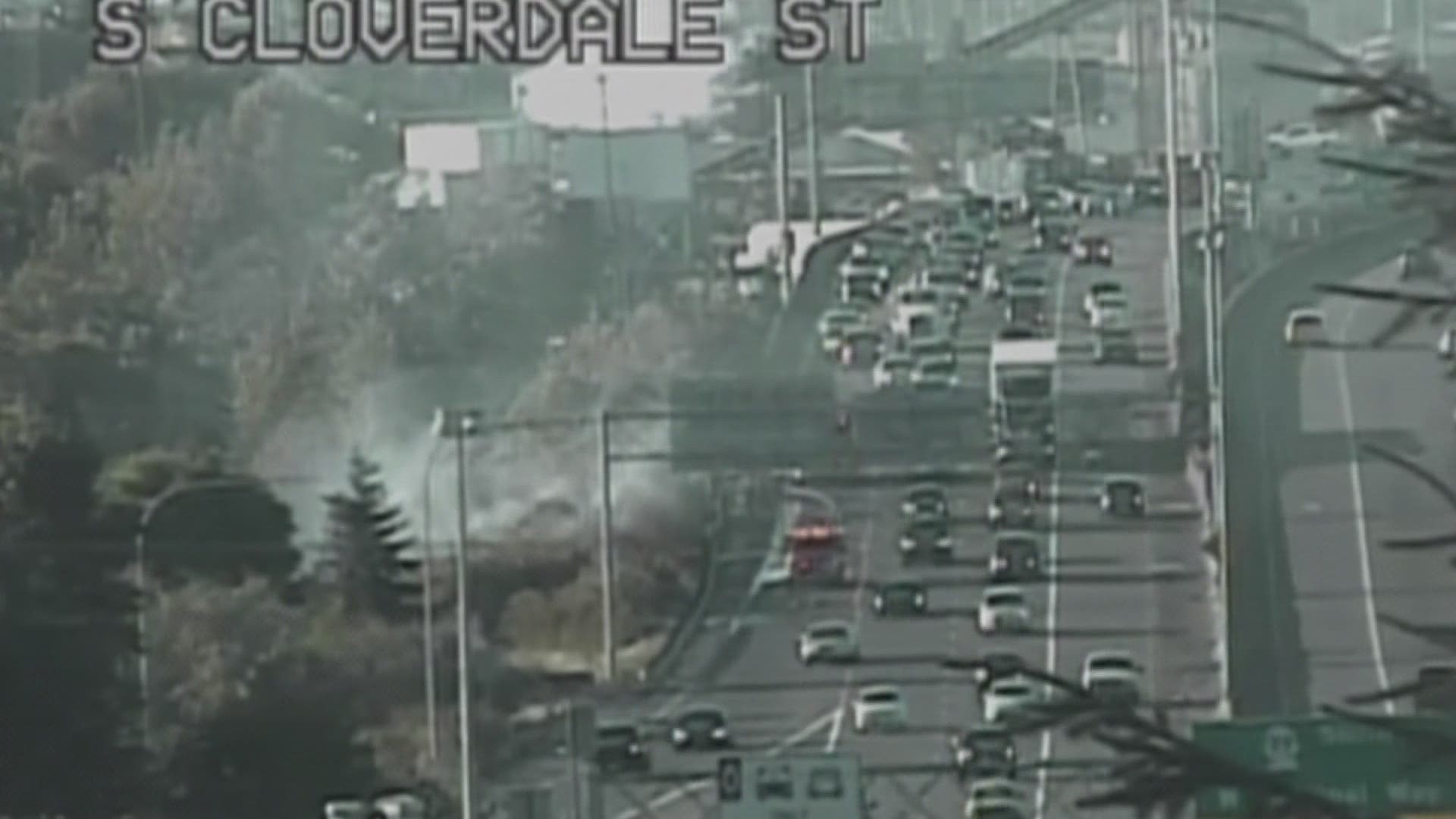The Washington State Department of Transportation is asking drivers to help lower fire risk as our dry spell continues.
This ongoing dry spell is creating a danger along the state's highways. Our normally lush landscape has essentially become a ticking time bomb.
“It's been very hot and dry, so it's not going to take much at all to spark a fire,” said Barbara Laboe, a spokesperson for the Washington Department of Transportation. “Any small spark could start a fire that just goes out of control way too quickly.”
“Our crews are certainly always aware of fire danger and, you know, take steps to try and prevent that," Laboe said.
One way they do that is by cutting the grass and thinning out the brush, but don’t expect to see their mowers anytime soon.
“When conditions are really warm and dry, it's dangerous for us to have mowers out there,” Laboe said. The reason for that is because WSDOT crews don't want to spark a fire with their equipment. “So we tend to try to do that earlier in the season so that it's not during the really warm, dry areas.”
The risk of a fire is now higher after our recent heat wave. The record breaking temperatures dried out brushy areas, leaving behind fuel that is primed to ignite. Because WSDOT is unable to clear out areas of thick brush, it lies on drivers across Washington to help lessen the risk of a fire.
Laboe said drivers should “never throw anything that's been ignited out of a vehicle window.” Laboe said that goes for cigarettes, fireworks, or anything that can be ignited. “Even if you think it's out, don't throw those out the window.”
While WSDOT understands some people have car trouble, drivers should be smart as they pull their car over to the side of the road, Laboe said.
“Never park on dry grass,” Laboe said. “The heat from the underside of your vehicle can spark a fire and we've had roadside fires start that way.”
Drivers who pull trailers with their vehicles also need to be cautious.
“Make sure when you have it all connected, that you don't have anything dragging that could create a spark and then cause a wildfire.”
This long dry snap, combined with the summer heat means the risk of a brush fire will continue to be high until Mother Nature brings some relief.
“We really just need everyone to do their part and try to make sure we can keep the roadways as safe as possible," Laboe said.
WSDOT is working to lessen the fire risk in future years. The department is trying to plant native vegetation on the sides of the road. It’s believed it lowers the risk of wildfire because it requires less maintenance. However, that is a long term project that could take years to finish.

